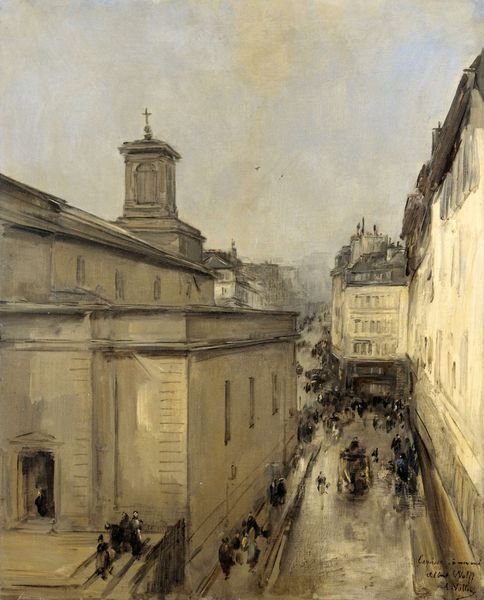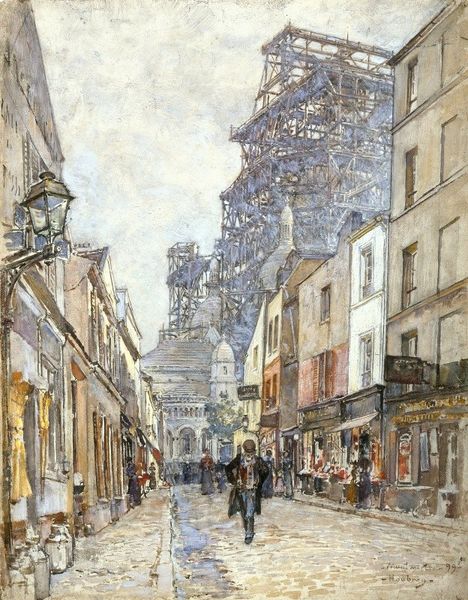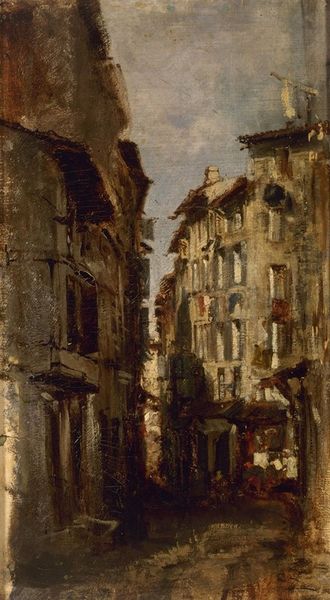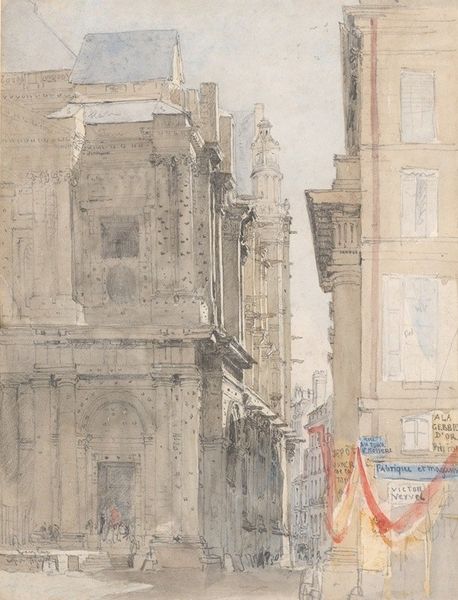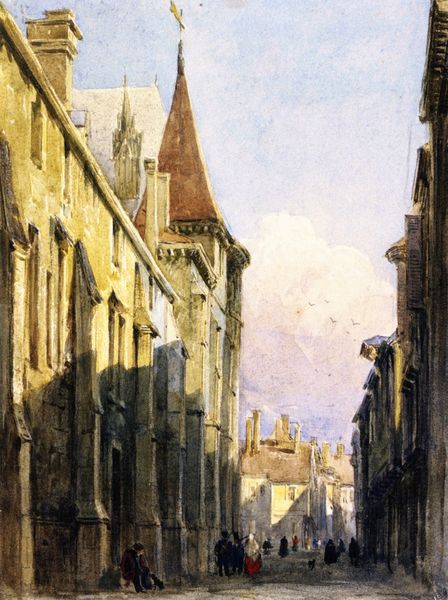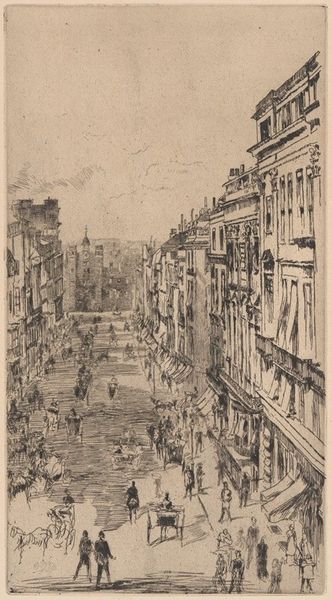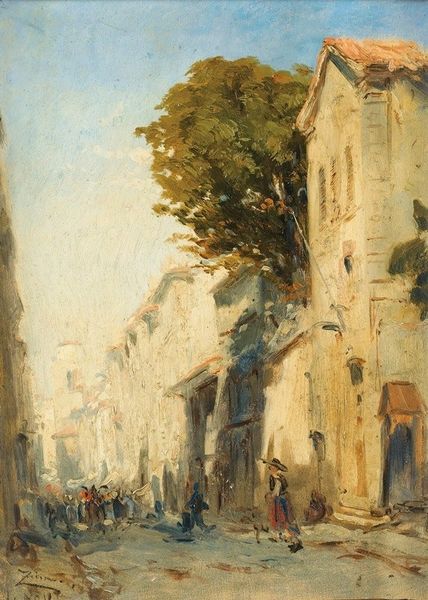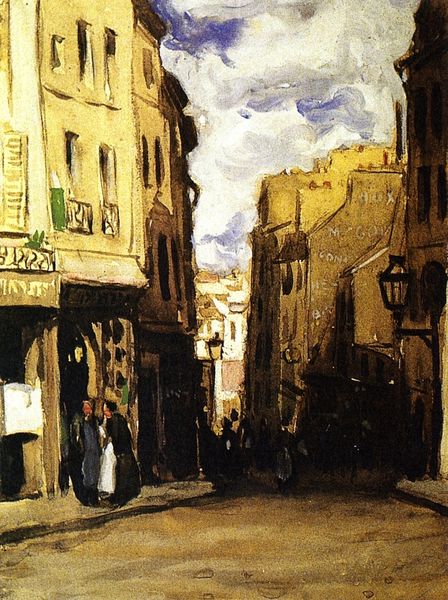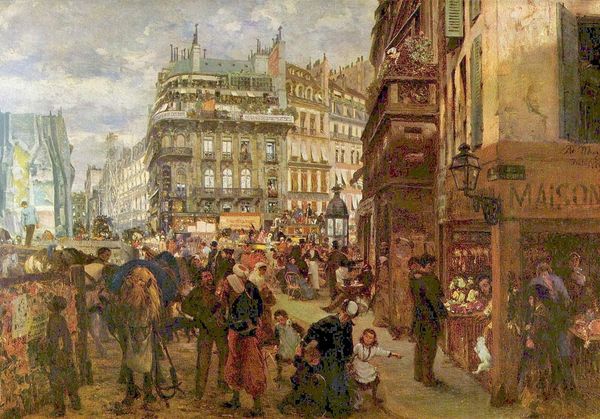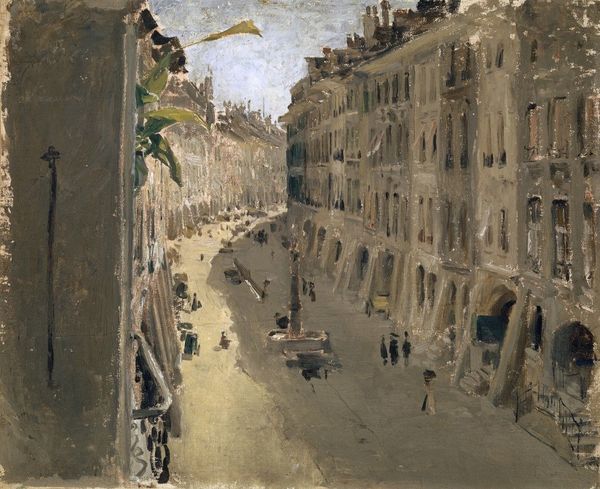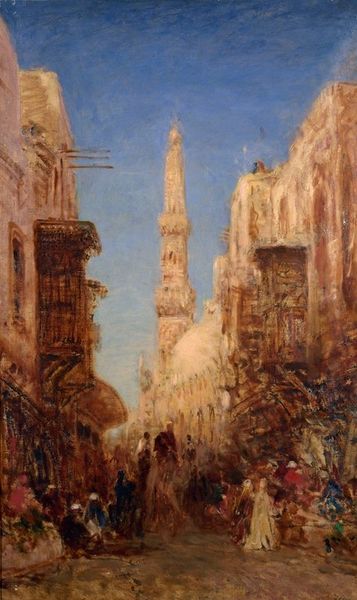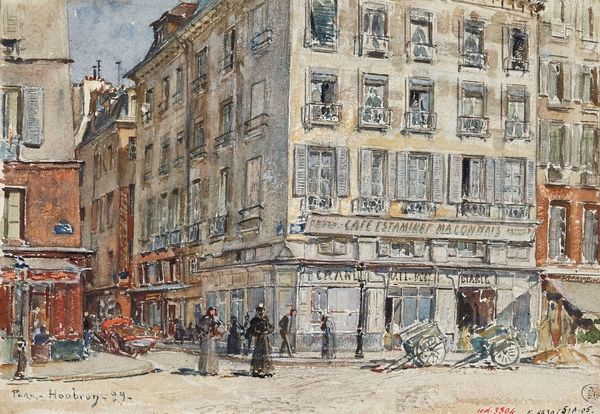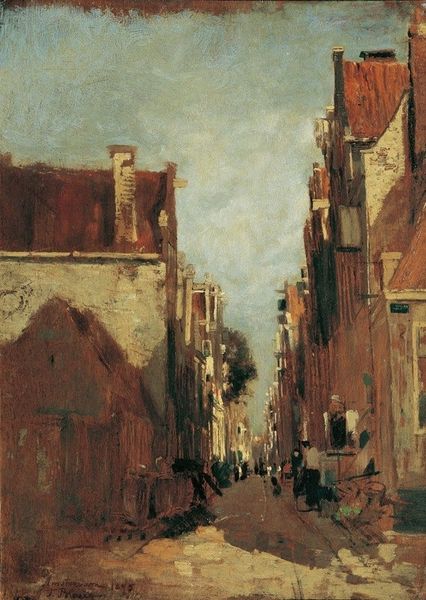
#
tree
#
urban landscape
#
abandoned
#
street view
#
urban cityscape
#
charcoal drawing
#
possibly oil pastel
#
oil painting
#
city scape
#
road
#
acrylic on canvas
#
street graffiti
#
street
#
building
Copyright: Public domain
Art Historian: This is "Place du Palais Royal, Paris," a watercolor by David Cox, created in 1828. Cox, though British, captured the bustling streets of Paris with a unique eye. Curator: Immediately, I’m struck by the use of light. See how it pours down the street, almost bleaching out the details? It creates this wonderful atmospheric perspective, making the street seem to stretch on forever. Art Historian: Cox's choice of watercolor allowed him to capture the fleeting atmosphere of the city, very different from the grand oil paintings often used to depict cityscapes at the time. The light itself, as you note, speaks to the broader social and economic vibrancy of Paris during the Restoration period. It's a city in revival. Curator: The architectural details, though quickly rendered, are quite effective. Look at the repetition of the vertical lines of the buildings. They give the composition a sense of order, even amidst the apparent chaos of street life. I notice he even uses a restricted palette - earth tones with that dominant blue of the sky, unifying the scene. Art Historian: It’s interesting that you use the term "chaos" to describe the figures in the street, considering the social order that they signify. People moving about, trade being conducted. And Paris was, in a way, reconstructing its identity after years of revolution and empire. Cox's vision might have resonated differently back in Britain, influencing British perceptions of Parisian life and culture. Curator: Perhaps “dynamism” is a better word than "chaos." The blurring effect adds to this dynamism and evokes movement beautifully. And while the historical context enriches our understanding, it's the interplay of light, form, and color that really brings this Place du Palais Royal to life for me. Art Historian: I find myself wondering about the accessibility of this image in Cox’s era. Watercolors often circulated among a different segment of the art market. Curator: Yes, reflecting on these brushstrokes makes me notice how they activate the eye and contribute significantly to this painting’s evocative energy. Art Historian: Considering this artwork gives one an interesting view into Parisian streetscapes through a British artist’s gaze in the late 1820s. Curator: And for me, the power of suggestion in its swift execution creates an enduring atmospheric impression of space and light.
Comments
No comments
Be the first to comment and join the conversation on the ultimate creative platform.
